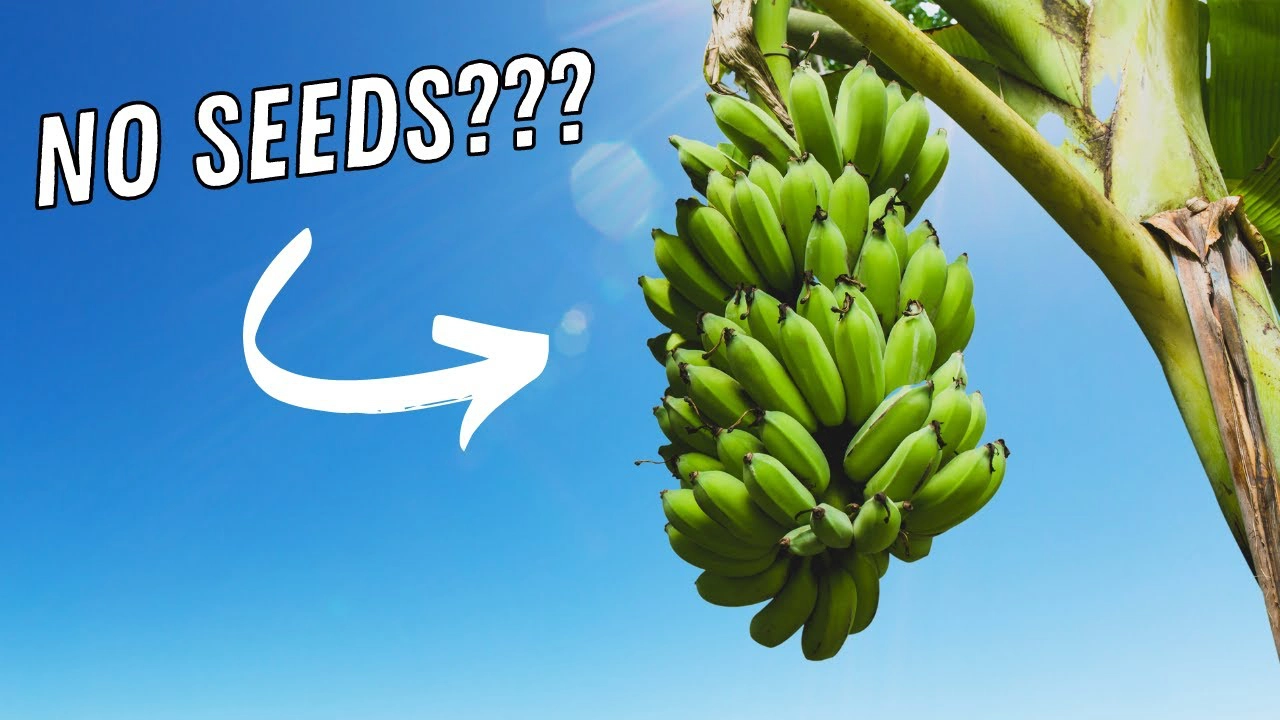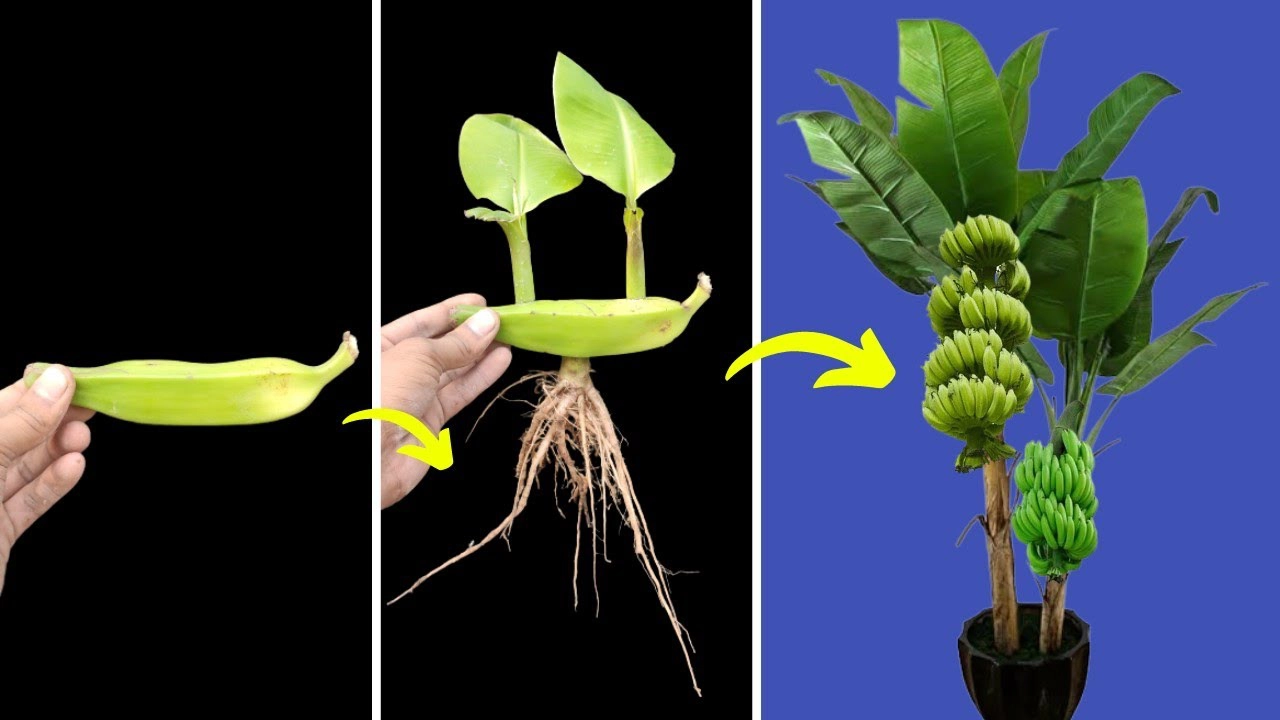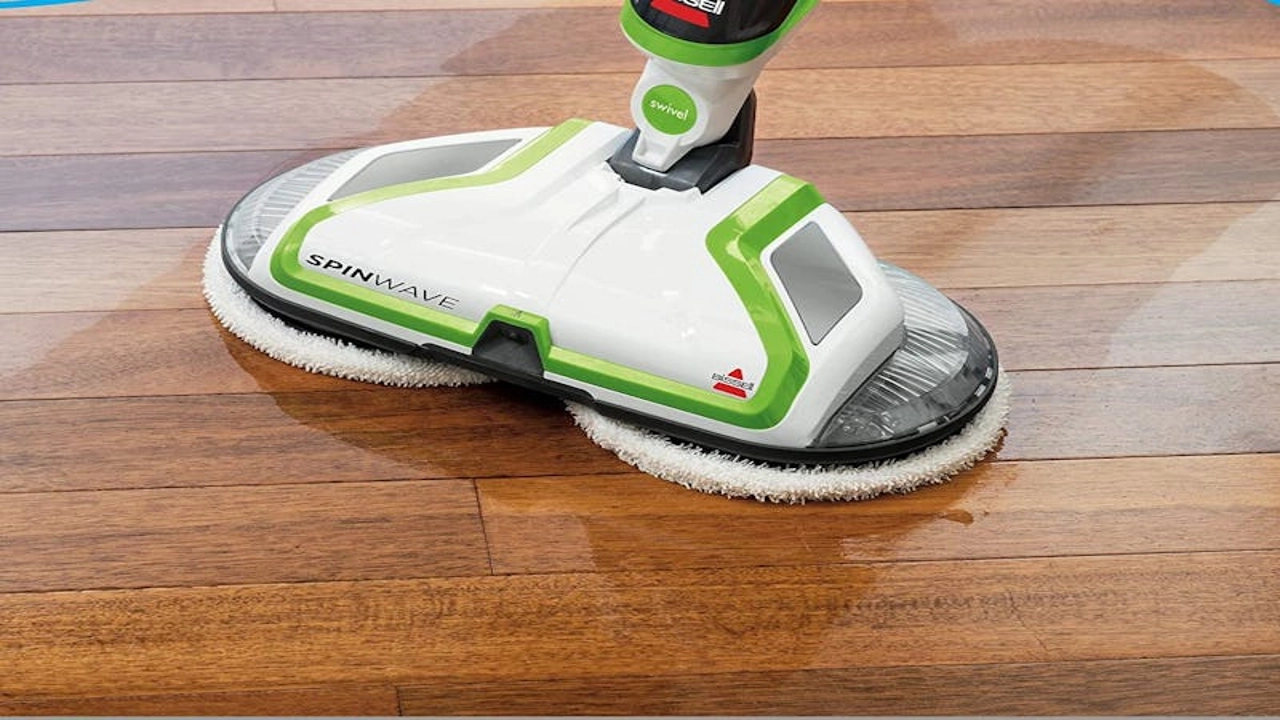How to grow banana tree without seed
Banana trees don’t grow from seeds. They reproduce through a process called “suckering.” This involves planting a piece of the parent plant called a “sucker,” which will eventually develop into a new banana tree. You can also find banana plantlets at garden centers, nurseries, and online retailers.
Once you have your banana sucker or plantlet, plant it in a well-drained, sunny location with rich, fertile soil. Water it regularly and fertilize it with a balanced fertilizer every few weeks. With proper care, your banana tree will grow and produce fruit within a year or two.
grow banana trees without seeds the secret revealed

Banana trees are a popular addition to gardens and landscapes, offering a tropical touch and delicious fruit. But you might be wondering, “How can I grow a banana tree without seed?” The good news is that banana trees don’t reproduce through seeds like many other plants. They propagate through a process called “suckering,” which involves growing new plants from underground stems called rhizomes.
Understanding Banana Reproduction
The banana we eat is not a fruit in the traditional sense. It’s actually a fleshy, seedless berry that develops from a flower bud on the plant. Bananas are hybrids, meaning they’re the result of crossbreeding different varieties. This hybridization has resulted in bananas that are mostly seedless, making them easier to eat.
However, a banana plant itself can reproduce through suckers, also known as “pups,” which grow from the rhizomes. These suckers are genetically identical to the parent plant, ensuring the same fruit characteristics. This is the primary way to grow new banana plants and maintain desired varieties.
How to Grow a Banana Tree Without Seed: Step-by-Step Guide
Let’s break down the process of growing a banana tree without seed:
1. Selecting a Healthy Sucker:
- Identify the suckers: Look for suckers growing at the base of the mature banana plant. You’ll likely find several suckers of different sizes.
- Choose the right sucker: Opt for a sucker that is at least 12 inches tall and has a strong root system. Avoid suckers that are too small or look weak.
- Separate the sucker: Using a sharp shovel or spade, carefully dig around the base of the sucker and separate it from the parent plant. Be sure to cut the sucker with a clean and sharp tool to avoid damaging the root system.
2. Preparing the Planting Site:
- Sunshine: Banana trees need full sun to thrive. Choose a location that receives at least six hours of direct sunlight daily.
- Soil: They prefer well-drained, fertile soil. You can improve your soil by incorporating organic matter, like compost or manure.
- Drainage: Ensure the planting site has good drainage to prevent root rot.
3. Planting the Sucker:
- Dig a hole: Dig a hole twice as wide and as deep as the sucker’s root ball.
- Place the sucker: Gently place the sucker in the hole, making sure the top of the root ball is level with the ground.
- Backfill the hole: Fill the hole with soil, tamping it down firmly around the roots to provide support.
- Water thoroughly: After planting, water the sucker deeply to help it establish its roots.
4. Ongoing Care:
- Watering: Banana trees need regular watering, especially during the first year after planting. Aim to water them deeply every few days.
- Fertilizing: They are heavy feeders and benefit from regular fertilization. Use a balanced fertilizer formulated for fruit trees or a fertilizer rich in potassium, nitrogen, and phosphorus. Apply fertilizer every few weeks during the growing season.
- Mulching: Apply a layer of organic mulch, like wood chips or straw, around the base of the plant to help retain moisture and suppress weeds.
- Pruning: As new suckers emerge, you can choose to remove them to focus the plant’s energy on fruit production.
5. Harvesting Your Bananas:
- Time to harvest: You can typically expect to harvest bananas 10 to 12 months after planting. The fruit will turn yellow when ripe, and it will have a slightly soft texture.
- Harvesting: Cut the fruit from the stalk when it is ripe.
Additional Tips for Success
- Use a banana-specific fertilizer: Consider using a fertilizer specifically formulated for banana trees.
- Provide support: As your banana tree grows, it may need support. You can use stakes or a trellis to help it stay upright.
- Protect from cold weather: Banana trees are sensitive to frost. If you live in a region with cold winters, you may need to protect your plant during the winter months.
Growing a Banana Tree in a Container
If you have limited space or live in a climate where banana trees are not hardy, you can grow them in containers. Use a large container, at least 15 gallons in size, filled with a well-draining potting mix. Make sure the container has drainage holes.
Common Challenges
While banana trees are relatively easy to grow, they are susceptible to some pests and diseases. Here are a few common issues:
- Banana Weevil: These pests can damage the fruit.
- Fusarium Wilt: This fungal disease can cause wilting and death of the plant.
- Panama Disease: Another fungal disease that can affect banana plants.
You can typically control pests and diseases by practicing good sanitation, removing infected plants, and using appropriate pest control methods.
Conclusion
Growing a banana tree without seed is a rewarding experience that can bring a touch of the tropics to your garden. With proper care and attention, you can enjoy fresh, homegrown bananas year after year. Remember to keep an eye out for pests and diseases and address any issues promptly to ensure your banana tree thrives.
bananas without seeds grow your own tropical paradise how is it possible
So you’re eager to grow your own bananas but are curious about how to do it without seeds? The secret, as you might have guessed, lies in the fact that banana plants don’t actually reproduce from seeds. Instead, they use a method called vegetative propagation. Let’s dive into the details.
The Secret Behind Growing Seedless Bananas
The answer to the question “grow banana trees without seeds the secret revealed” lies in understanding the unique nature of banana plants. Unlike many fruits, bananas don’t rely on seeds for reproduction. Instead, they use a process called vegetative propagation. This means they create new plants from existing plant parts.
Here’s how it works:
- Suckers: The banana plant produces offshoots called suckers from its underground rhizome. These suckers contain a genetic clone of the parent plant.
- Division: You can separate these suckers from the parent plant and plant them independently. This is the most common method of growing banana trees without seeds.
- Rhizome Division: You can also divide the rhizome itself, which will produce new shoots.
How to Grow Banana Plants from Suckers
- Choose a Healthy Sucker: Select a vigorous sucker with several healthy leaves.
- Prepare the Sucker: Cut the sucker off the parent plant, ensuring you have a section of the rhizome attached.
- Plant the Sucker: Dig a hole in well-drained soil, ensuring the rhizome is buried slightly.
- Water Regularly: Water the sucker deeply to encourage root growth.
- Provide Support: As the new banana plant grows, provide support with stakes or a trellis.
Tips for Success
- Sunlight: Bananas need plenty of sunlight, at least 6-8 hours per day.
- Soil: Well-drained soil is essential. If your soil is heavy clay, you might need to amend it with compost or sand.
- Watering: Keep the soil consistently moist, but avoid overwatering.
- Fertilizer: Banana plants are heavy feeders and benefit from regular fertilization with a balanced fertilizer.
Where to Get Banana Suckers
If you’re unsure where to find banana suckers for your grow banana trees without seeds the secret revealed project, you can:
- Contact local nurseries: Nurseries often sell banana suckers.
- Ask a friend or neighbor: If you know someone growing bananas, ask them if they have any extra suckers.
- Online retailers: Some online retailers specialize in banana plants and suckers.
Additional Tips:
- Climate: Banana plants thrive in warm, humid climates.
- Protection: They are susceptible to cold temperatures, so consider protecting them during winter in colder regions.
- Pests and Diseases: Be vigilant for pests and diseases, and address any problems promptly.
The Secret is Out!
Now you know the secret to growing banana trees without seeds the secret revealed! By understanding the process of vegetative propagation and following the tips above, you can enjoy the taste and beauty of your own homegrown bananas. Don’t be afraid to experiment and explore different varieties to find your favorites. Happy growing!
Q&A: Growing Banana Trees Without Seeds
Q: Can I really grow a banana tree without planting a seed?
A: Yes! You can grow a banana tree from a sucker, which is a shoot that grows from the base of the parent plant.
Q: How do I get a sucker to plant?
A: Look for a sucker that is at least 1 foot tall and has a few leaves. Carefully cut it from the parent plant, making sure to get a piece of the rhizome (underground stem) attached.
Q: What kind of soil does a banana tree need?
A: Banana trees thrive in well-drained, rich soil with a slightly acidic pH.
Q: Where should I plant my banana sucker?
A: Choose a sunny spot that gets at least 6 hours of sunlight per day. You can plant it directly in the ground or in a large container.
Q: How much water does a banana tree need?
A: Banana trees are heavy drinkers and need consistent watering, especially during hot, dry weather. Water deeply once or twice a week.
Q: How long does it take for a banana tree to produce fruit?
A: It can take about 1 to 2 years for a banana tree to produce fruit after planting.
Q: What can I do to make my banana tree produce more fruit?
A: You can fertilize your banana tree regularly with a balanced fertilizer to encourage growth and fruit production.
Q: What are some common problems that I might encounter with growing a banana tree?
A: Some common problems include pests like banana weevils and diseases like Panama disease. You can learn about these problems and find solutions online or through local gardening resources.
Conclusion
Growing a banana tree from a seedless sucker is a rewarding journey. By carefully selecting a healthy sucker, preparing the soil properly, and providing consistent care, you can nurture a thriving banana plant. Remember, patience is key, as it takes time for your banana tree to reach maturity. You can now enjoy the delicious fruits of your labor!
So, what are you waiting for? Start your own banana tree adventure today! Share your experiences in the comments below, and don’t forget to share this post on social media. Let’s inspire others to explore the wonderful world of banana cultivation. Let us know your questions and tips, and let’s learn from each other.





